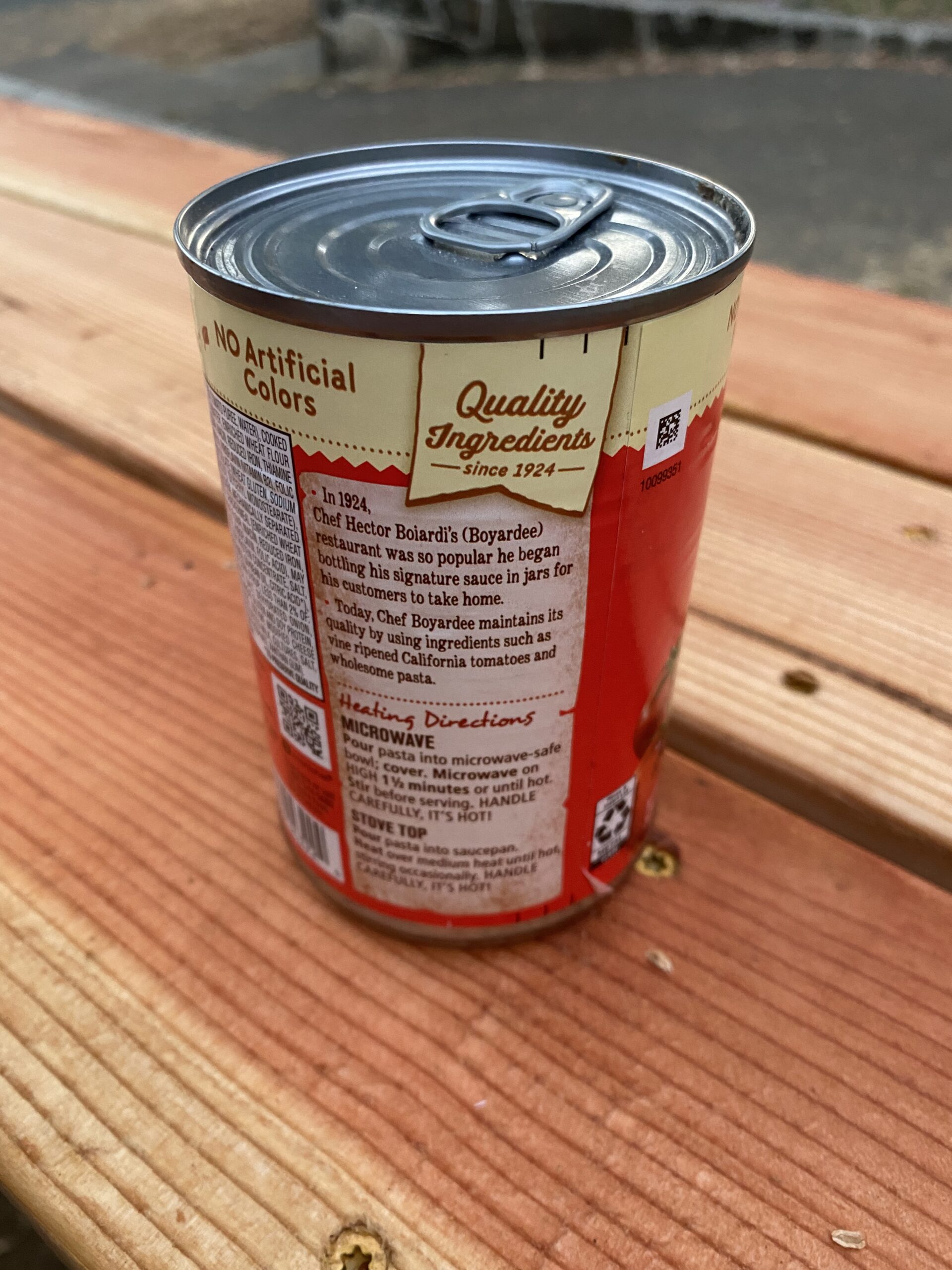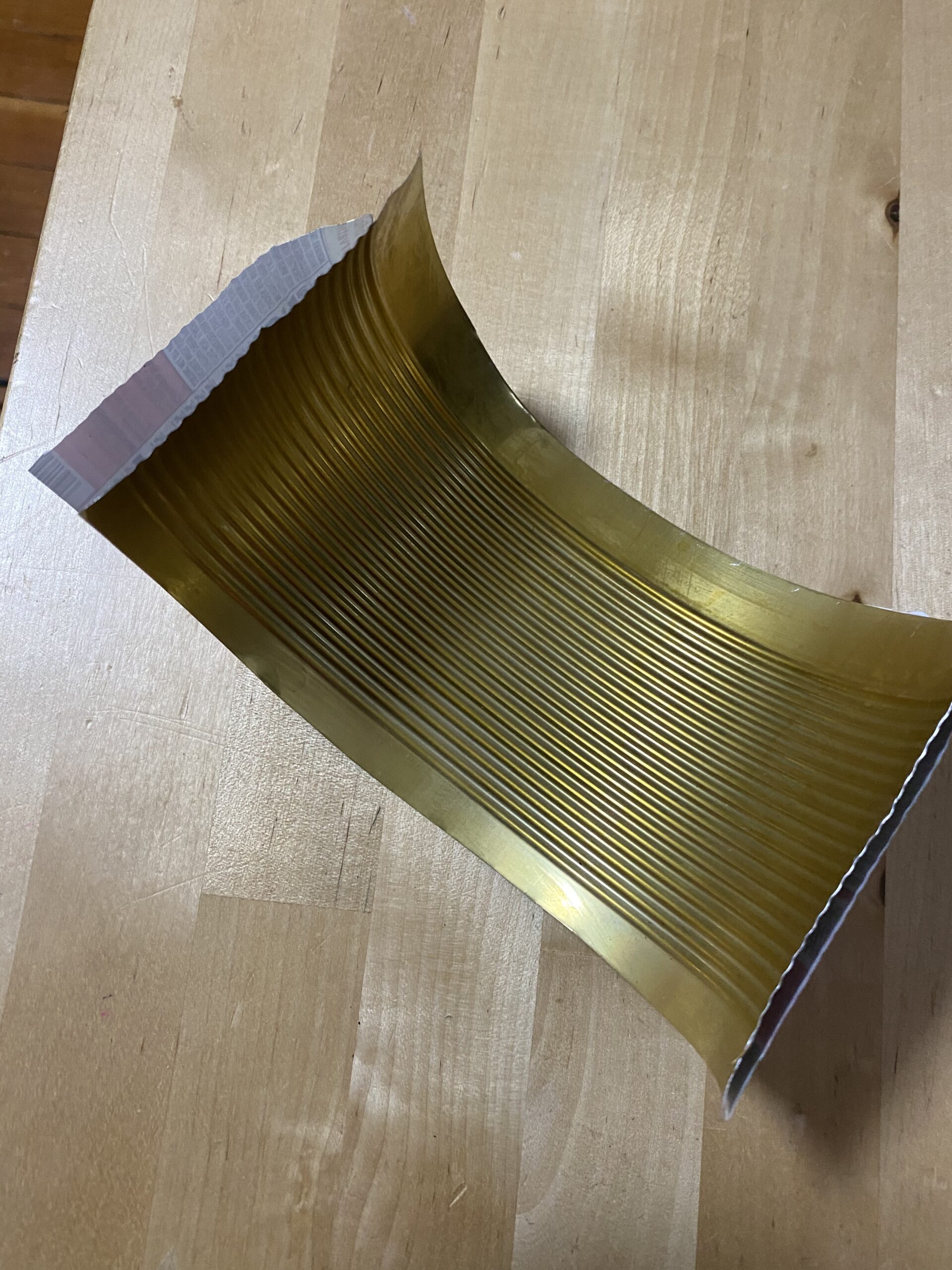Which metals are found in a typical food can? XRF test results for the inside (& outside) of a metal can from Chef Boyardee Spaghetti & Meatballs.

 October 22, 2022 – Saturday
October 22, 2022 – Saturday
What’s a tin can made of these days anyway? (Part 2!)
Stand by for a summary comparing the test results of this can to the test results of the (Organic Pineapple) can posted last week. [Here’s that article in case you missed it – link.]
Full XRF Test Results for the Chef Boyardee Can Pictured
Reading #1) 60-second reading – Golden Inside of Can
Readings repeated multiple times (on several areas of the can’s interior) to confirm the results
- Lead (Pb): non-detect
- Cadmium (Cd): non-detect
- Tin (Sn): 7,563 +/- 155 ppm
- Mercury (Hg): non-detect
- Selenium (Se): non-detect
- Barium (Ba): non-detect
- Arsenic (As): non-detect
- Chromium (Cr): 316 +/- 128 ppm
- Antimony (Sb): non-detect
- Copper (Cu): non-detect
- Manganese (Mn): 1,902 +/- 298 ppm
- Titanium (Ti): non-detect
- Zinc (Zn): non-detect
- Bromine (Br): non-detect
- Bismuth (Bi): 82 +/- 52 ppm
- Zirconium (Zr): non-detect
- Niobium (Nb): non-detect
- Iron (Fe): 987,300 +/- 1,300 ppm
- Cobalt (Co): 2,341 +/- 987 ppm
- Platinum (Pt): non-detect
- No other metals detected in consumer goods mode.
Reading #2) 60-second reading – Silver Exterior of Can
Readings repeated multiple times to confirm the results
- Lead (Pb): non-detect
- Cadmium (Cd): non-detect
- Tin (Sn): 2,674 +/- 95 ppm
- Mercury (Hg): non-detect
- Selenium (Se): non-detect
- Barium (Ba): non-detect
- Arsenic (As): non-detect
- Chromium (Cr): 293 +/- 122 ppm
- Antimony (Sb): 86 +/- 51 ppm
- Copper (Cu): non-detect
- Manganese (Mn): 2,150 +/- 299 ppm
- Titanium (Ti): non-detect
- Zinc (Zn): non-detect
- Bromine (Br): non-detect
- Bismuth (Bi): 173 +/- 58 ppm
- Zirconium (Zr): non-detect
- Niobium (Nb): non-detect
- Iron (Fe): 994,400 +/- 1,700 ppm
- Cobalt (Co): non-detect
- Platinum (Pt): non-detect
- No other metals detected in consumer goods mode.
For those new to this website
Tamara Rubin is a Federal-award-winning independent advocate for consumer goods safety and a documentary filmmaker. She is also a mother of Lead-poisoned children. Tamara’s sons were acutely Lead-poisoned in August of 2005. She began testing consumer goods for toxicants in 2009 and was the parent-advocate responsible for finding Lead in the popular fidget spinner toys in 2017. Her work was also responsible for two CPSC product recalls in the summer of 2022, the Jumping Jumperoo recall (June 2022) and the Lead painted NUK baby bottle recall (July 2022) and was featured in an NPR story about Lead in consumer goods in August of 2022. Tamara uses XRF testing (a scientific method used by the U.S. Consumer Product Safety Commission) to test consumer goods for toxicants (specifically heavy metals), including Lead, Cadmium, Mercury, Antimony, and Arsenic. All test results reported on this website are science-based, accurate, and replicable. Items are tested multiple times, to confirm the test results for each component tested and reported on. Please click through to this link to learn more about the testing methodology used for the test results discussed and reported on this website.










Never Miss an Important Article Again!
Join our Email List






